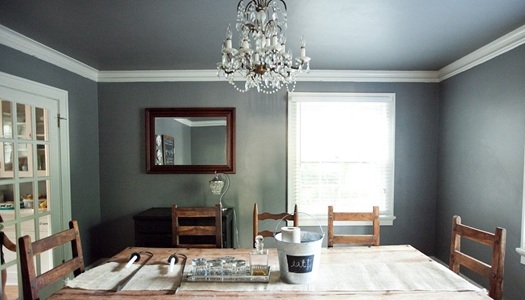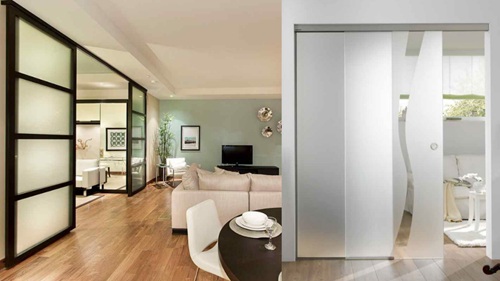Choosing paint colors is one of the most impactful decisions in interior design. Traditionally, ceilings are painted white regardless of wall color, creating a clean separation and enhancing light reflection. However, more designers and homeowners are experimenting with painting the ceiling the same color as the walls, a trend that can produce striking and cozy effects—when done right.
This design approach, while modern and bold, has both practical and aesthetic implications. In this article, we break down the pros and cons of painting your ceiling the same color as your walls, helping you decide if this strategy aligns with your design vision and space.
What Does Painting the Ceiling the Same Color as the Walls Mean?

This method involves using the exact same paint color—and often the same finish—for both the walls and the ceiling. This can be done in:
- Small rooms to create unity and reduce visual boundaries
- Rooms with high or sloped ceilings to make them feel cozier
- Accent rooms or modern spaces for dramatic effect
The technique may involve using matte, eggshell, or satin finishes depending on room type and desired appearance.
Pros of Painting Ceiling the Same Color as Walls
1. Creates a Unified and Seamless Look
One of the biggest advantages of this approach is that it blends the walls and ceiling into a single, cohesive envelope. This eliminates harsh visual lines and helps create a calm, unified atmosphere, especially in small or irregularly shaped rooms.
2. Makes Rooms Feel Larger (in Some Cases)
Contrary to popular belief, painting the ceiling the same color as the walls can actually make a room feel more expansive. When there’s no contrast, the eye travels uninterrupted around the room, which can give the illusion of more space and higher ceilings, particularly when using light colors.
3. Adds a Modern or Designer Touch
Matching ceiling and wall color is a contemporary design trend, often used in high-end or architecturally styled interiors. It shows intentionality and a designer’s eye for detail, especially when paired with minimalistic or monochromatic decor.
4. Great for Rooms with Angled or Low Ceilings
In rooms with sloped ceilings, dormers, or angled walls (like attics or lofts), using a single color for both walls and ceilings can reduce awkward transitions and give the space a more harmonized look.
5. Enhances Mood and Ambiance
Dark colors used on both walls and ceilings can create a cozy, intimate, or dramatic effect—perfect for bedrooms, dining rooms, or media rooms. This enveloping atmosphere works well when you’re aiming for richness and moodiness in your interior design.
6. Simplifies the Painting Process
Using one color for walls and ceilings can save time and reduce complexity, especially for DIY painters. There’s no need for careful edging where walls meet ceilings, which can make the job faster and less labor-intensive.
Cons of Painting Ceiling the Same Color as Walls
1. Can Make a Room Feel Smaller (Especially with Dark Colors)
While matching colors can sometimes make a room feel larger, using dark or saturated tones for both walls and ceilings can also make the space feel closed in or claustrophobic, particularly in small rooms with low natural light.
2. Reduces Light Reflection
White ceilings help reflect natural and artificial light, making rooms feel brighter. When you paint the ceiling a darker or non-white color, it can absorb light and potentially make the room feel dim or shadowy—a disadvantage in rooms that rely heavily on lightness and openness.
3. May Flatten Architectural Interest
A contrast between wall and ceiling colors can help highlight crown molding, tray ceilings, or architectural features. Using a single color throughout can hide these details or make the room appear less dynamic, especially in traditionally styled homes.
4. Touch-ups and Repairs May Be Harder
Ceilings often get scuffed during installations, or stained from leaks. If your ceiling is painted the same color as the wall, touching up just the ceiling may be harder, especially if the paint has faded over time or if matching the exact finish proves tricky.
5. May Not Appeal to Everyone
While some people love the immersive effect of one-color spaces, others find it overwhelming or bland. This could be a concern if you’re planning to sell your home and want to appeal to a broader audience.
When to Consider This Design Choice
Painting the ceiling the same color as the walls is a smart choice when:
- You’re working with small or irregularly shaped rooms
- You want a modern, monochromatic aesthetic
- The ceiling is sloped, vaulted, or has no clear break
- You want a moody or dramatic room design
- You’re using lighter tones that won’t absorb too much light
Tips for Success
- Choose the right finish: Use flat or matte paint on ceilings to hide imperfections, even if using satin or eggshell on walls.
- Test with samples: Before committing, paint small sections to see how the light affects the space.
- Use lighter tones in small or dark rooms to prevent a cave-like effect.
- Consider lighting: Compensate with layered lighting (lamps, sconces, recessed lighting) if the room lacks natural light.
- Highlight trim: If you still want some contrast, paint baseboards, window casings, and door frames in a crisp white or contrasting color.
Conclusion
Painting your ceiling the same color as your walls is a bold, modern, and increasingly popular design choice that can add warmth, cohesion, and a high-end feel to your space. It works particularly well in small rooms, contemporary interiors, or areas where seamlessness and mood are the goal.
However, it’s not a one-size-fits-all solution. Consider light levels, room size, ceiling height, and personal preference before making the leap. For the right room and the right color, this technique can transform a space from average to architectural in a single, sweeping stroke of color.
Ultimately, it’s about balancing design ambition with practical awareness—and when done thoughtfully, painting your ceiling the same color as your walls can be a powerful design tool in any home.

